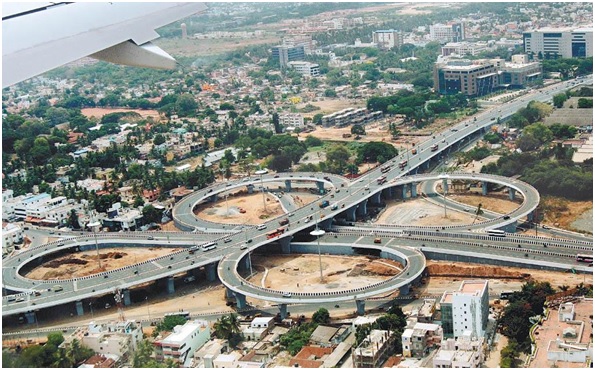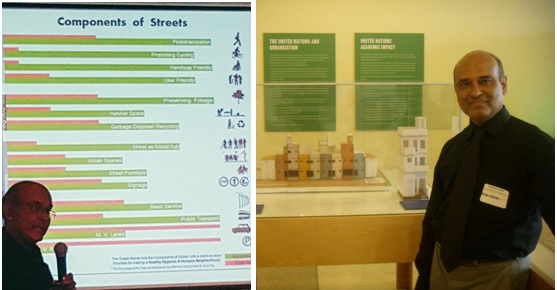In an age where progressive urban cities serve as a measure of national growth, it is easy to be carried away by several ambitious and pro-western urban projects. The central and state governments are pushing for advancement in the form of smart cities and various other technological upgrades. This is apparent in the initiation of transport projects such as metro rails, mono rails and even the outrageous concept of the hyperloop. The hyperloop is the brainchild of SpaceX founder Elon Musk and is the transportation of people and goods by means of pressurised pods in horizontal vacuum tubes. This would enable transportation between extremely long distances in unrealistically short durations. Although exciting, this is a faux pas in terms of urban development, as the needless implementation of expensive infrastructure without the resolution of problems with existing transport infrastructure leads to the neglect of less glamorous but efficient transportation systems. For example, in Chennai City it would be better to improve the existing MTC bus (Metropolitan Transport Corporation) and MRTS (Mass Rapid Transport System) infrastructure instead of the introduction of a completely new monorail system.
Image 1 : Kathipara Junction, Chennai. (Source- Wikipedia)
Recently, as a researcher for CAG, I had the opportunity to attend the SUMNet workshop conducted in Delhi on July 21-22, 2017. SUMNet (Sustainable Urban Mobility Network) is a democratic, secular, membership-based coalition of individuals, voluntary organisations and civil society networks and movements that seeks to improve the overall quality of life for all by securing deeply democratic processes of decision-making to ensure that urban transportation systems are universally accessible, socially just, safe and secure, economically viable and environmentally sound.
The theme of this workshop was walkability. There was a lot of discussion about the National Urban Transport Policy (NUTP), and how it focused more on vehicles rather than people and the lack of adequate safety features for non motorised transport. An analysis showed that this was due to poor street design, highlighted by a lack of crossings at junctions and lack of provision for street furniture and vendors which lead to encroachments. A few solutions that were put forward were the implementation of standard design guidelines based on open discussions and an increase of NMT zones in congested areas. A good example of such a standard guideline is the NYC Department of Transportation Manual. This was compared to the street design guidelines used in Pune, India and the streets of Pune, though marginally better than most Indian cities, were still found lacking in terms of user experience and ease of movement.
Image 2 : Urban Designer Prasanna Desai – Presentation on Street Design
The second part of Day 1 comprised of a presentation by Prasanna Desai, an urban designer, on the possible guidelines for good street design and concluded in an open debate on the same. We also had the chance to discuss case studies and examples of completed projects in Pune, India. The day ended with a visit to INA to analyse the implemented street design in that particular neighbourhood as a probable standard of good design. Unfortunately the pavements in that locality were far removed from the idea of good design. Though they were adequate, they required pedestrians to climb down and up again at entry points to buildings, with a small ramp to facilitate wheelchair users. Ideally, pedestrians should move on a continuous pavement level and vehicles would move over the pavement to access the building site.
Day 2 of the workshop started off with one on one sessions to discuss the proposals put forward by individual organisations in accordance with the goals and vision of SUM Net India. CAG is part of the Transport Budget Analysis project, which would entail undertaking an analysis and building on the understanding of expenditure on transport in Chennai. The goal is to understand the breakup of the proposed funding for transport between the major constituent bodies of transport, i.e. MTC, MRTS etc. One challenge in such an analysis is to ascertain the amount of funds allocated for ‘road infrastructure’ in the Greater Chennai budget for 2016-2017. Among other things, we will aim to ascertain the per square meter cost of roads across the participating cities (Chennai, Nagpur and Bangalore) and a comparison of the probable variation of the same.
The thorough analysis of the transportation budget is necessary as the flow of money involved in such large scale transportation infrastructure projects creates a strong but often overlooked narration. This monetary narration spins a tale of cost and effect and helps us to determine the amount of transparency and efficiency of proposed transportation projects and adjudicate whether that money could be used elsewhere, like in existing modes of transportation. This analysis in turn can lead to better design and management of our transportation networks and streets. It can also bring about a standardised format for similar projects across such as new streets and pavements. For example, Bangalore follows the ‘Tender Sure’ guideline for streets and pavements whereas Chennai leans towards the guidelines put forward by ITDP (Indian Transport and Development Policy). It would be interesting to break down both guidelines according to cost and access the feasibility of both comparatively.
The workshop ended with a panel discussion on Intermediate Public Transport (ITP) and covered topics such as the nature, relevance, issues and policy directions of ITPs in the Indian context. To the layperson, ITPs encompass all forms of non governmental public transport such as cycle rickshaws, auto rickshaws and public taxis.
The panel was lead by Partha Mukhopadhyay of CPR India (Centre for Policy Research) who put forward a report titled ‘Integrating Intermediate Public Transport within Transport Regulation in a Mega City’. The report called for the integration of ITPs into the fabric of public transportation, with a regulatory body whose purpose would only be the regulation of existing vehicles and the registration of new owners and vehicles. It advocates for ITPs to replace private transport by complementing and supplementing the more mainstream public transport. It would achieve this by advocating the concept of ‘last mile connectivity’.
The SUMNet workshop was extremely informative and brought to light the various issues faced by different cities across the country and the solutions that could be implemented to resolve those issues. The success of the workshop was highlighted by the fact that, though being a non-Hindi speaking South Indian among a group that predominantly conversed in Hindi, I was able to relate to the problems faced by each partnering organisation and was able to converse through the unifying language of urban development and betterment. After all, everyone is working towards a singular goal, which is a better habitat to live in.


Add new comment